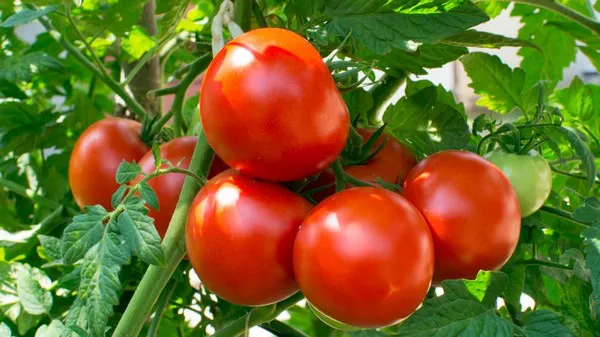Tomatoes are a popular and versatile crop grown in gardens worldwide. They are a staple ingredient in many culinary dishes and offer numerous health benefits. However, tomato plants are highly susceptible to attack by various pests, which can significantly damage or destroy the harvest if left unchecked. This article aims to provide a comprehensive guide to help gardeners identify and effectively manage the common pests that feast on tomatoes.
Understanding Tomato-Eating Pests
Tomato plants are vulnerable to a range of pests, including insects and other organisms, that feed on different parts of the plant. These pests can cause damage to the leaves, stems, flowers, and fruits, impacting the overall health and productivity of the tomato plant. It is crucial to be familiar with these pests to take appropriate action for effective pest control.
Identifying Tomato-Eating Pests
Identifying the pests that target tomatoes is essential for implementing the right pest management strategies. Here are some common pests that feed on tomatoes:
Tomato Hornworms (Manduca quinquemaculata): These large, green caterpillars can reach up to four inches in length. They have distinctive white or black diagonal stripes along their bodies and a horn-like protrusion at the rear. Tomato hornworms consume tomato leaves and stems, causing significant defoliation. Handpicking or using organic insecticides can help control their populations.
Aphids (Aphidoidea): Aphids are small, soft-bodied insects that can be green, black, yellow, or brown. They cluster on the undersides of leaves and feed on the sap of tomato plants, causing distortion, stunted growth, and the development of sticky honeydew. In severe infestations, aphids can transmit plant diseases. Regularly inspecting plants and using insecticidal soaps or natural predators like ladybugs can help manage aphid populations.
Whiteflies (Bemisia tabaci): Whiteflies are tiny, flying insects that resemble small white moths. They congregate on the undersides of leaves and suck sap from the tomato plant, causing yellowing, stunted growth, and the transmission of plant viruses. Physical removal, yellow sticky traps, or insecticidal soaps can be effective in controlling whitefly populations.
Fruitworms (Helicoverpa spp.): These pests are small caterpillars that primarily target the fruits of tomato plants. They enter the tomato fruit, causing internal damage and rendering the fruit inedible. Regular monitoring and early harvesting of ripe tomatoes can help minimize fruitworm damage. If necessary, organic insecticides can be used to control their populations.
Cutworms (Noctuidae): Cutworms are larvae of various moth species. They are nocturnal and typically feed on young tomato plants by severing the stem at the soil line, causing plants to wilt or die. Protective collars around the base of the plant and proper cultural practices, such as removing debris and tilling the soil before planting, can help prevent cutworm damage.
Slugs and Snails (Gastropoda): These mollusks are commonly found in damp garden environments. Slugs and snails feed on young tomato plants, leaving irregular holes in leaves and fruits. Cultural practices, such as removing hiding places like debris or boards, and physical barriers like copper tape or diatomaceous earth can help deter these pests.
Spider Mites (Tetranychidae): Spider mites are tiny arachnids that infest tomato plants, especially in hot and dry conditions. They feed on the underside of leaves, causing yellow stippling, leaf discoloration, and webbing. Regularly inspecting plants and using a forceful spray of water or insecticidal soaps can help control spider mite populations.
Integrated Pest Management Strategies
To effectively manage pests that eat tomatoes, it is important to adopt an integrated pest management (IPM) approach. IPM combines multiple strategies to minimize pest populations while minimizing harm to the environment. Here are some key strategies for controlling tomato-eating pests:
Cultural Practices: Implement good cultural practices to promote plant health and reduce pest populations. This includes proper sanitation, regular removal of plant debris, crop rotation, and selecting pest-resistant tomato varieties.
Physical Barriers: Use physical barriers to deter pests. This can include protective collars around young plants to prevent cutworm damage or netting to keep out larger pests like birds or rabbits.
Companion Planting: Companion planting can help repel or attract beneficial insects to control pest populations. For example, planting marigolds or other aromatic herbs near tomatoes can deter certain pests. Additionally, attracting natural predators like ladybugs or lacewings by planting flowers can help control aphids and other pests.
Biological Controls: Introduce beneficial insects or organisms that prey on tomato-eating pests. Ladybugs, lacewings, and predatory mites are examples of natural enemies that can help control aphids, whiteflies, and spider mites.
Organic Insecticides: When necessary, use organic insecticides derived from natural sources to target specific pests. These include products such as neem oil, insecticidal soaps, or pyrethrin-based sprays. Follow label instructions and apply these products judiciously to minimize environmental impact.
Monitoring and Early Detection: Regularly inspect tomato plants for signs of pest infestation. Early detection allows for prompt action and prevents pests from establishing large populations. Handpicking larger pests like tomato hornworms or using yellow sticky traps for flying insects can help monitor and control pest populations.
Conclusion
Tomatoes are a valuable crop in many gardens, but they are prone to attack by various pests. By understanding the common pests that eat tomatoes and implementing appropriate management strategies, gardeners can protect their tomato plants and ensure a successful harvest. Regular monitoring, cultural practices, physical barriers, biological controls, and selective use of organic insecticides are all part of an integrated pest management approach. By combining these strategies, gardeners can effectively control pests and enjoy healthy, pest-free tomato plants.


